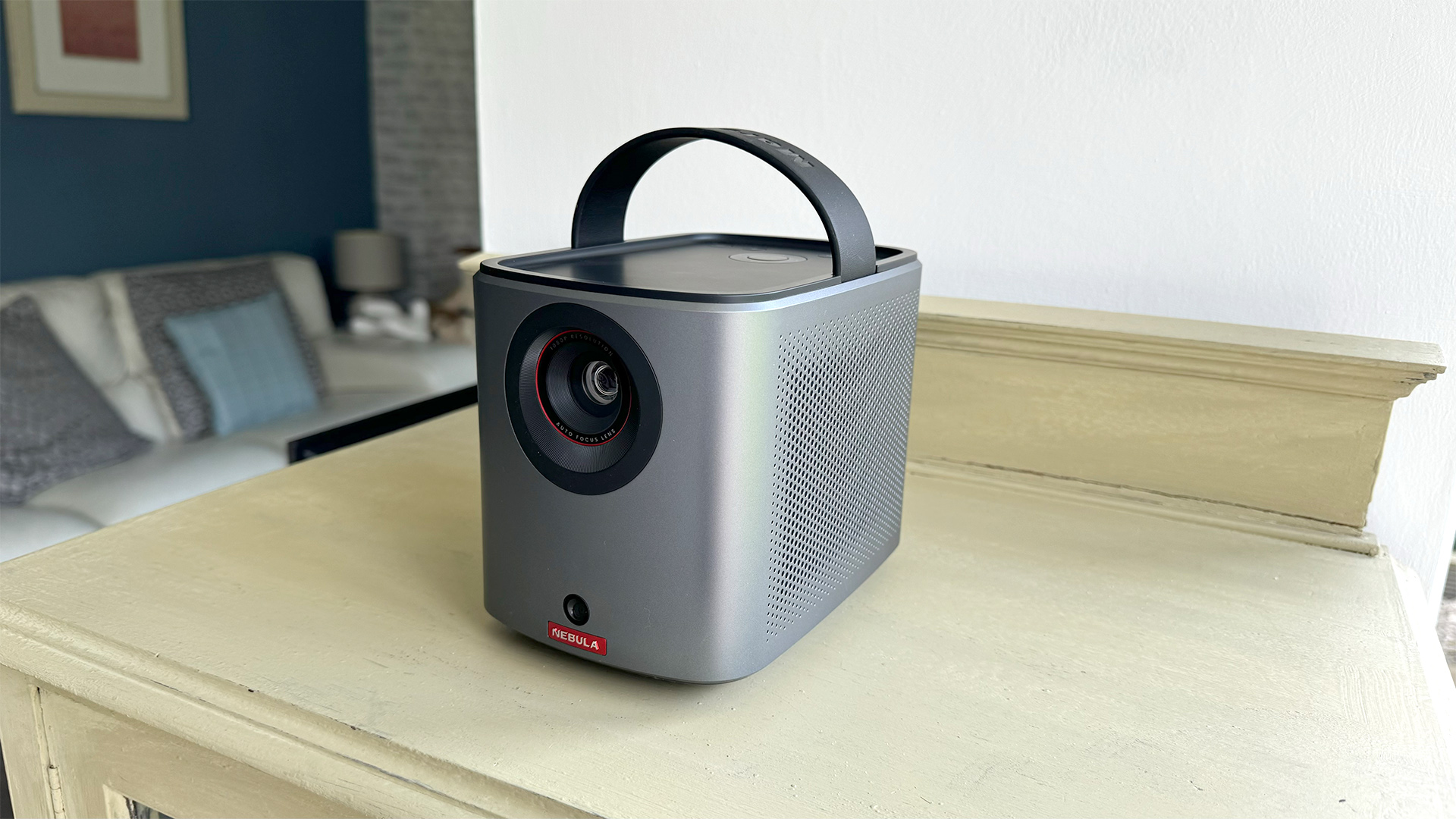
Now that king-sized TVs with prices you can actually afford have suddenly become a thing, the projection world is finding itself having to think out of the box a bit to ensure it still has a part to play in today’s fast-changing AV world. Nowhere is this more evident than in the portable projector market.
Once largely neglected by AV fans unwilling to accept the sort of performance compromises associated with making projectors small enough to be put in a bag or carried around in one hand, the growing desire to watch huge images no matter where you might be has seen portable projectors suddenly thrust into the home entertainment limelight. A development that we’re happy to say Anker’s Nebula Mars 3 Air has responded to particularly brilliantly.
Price
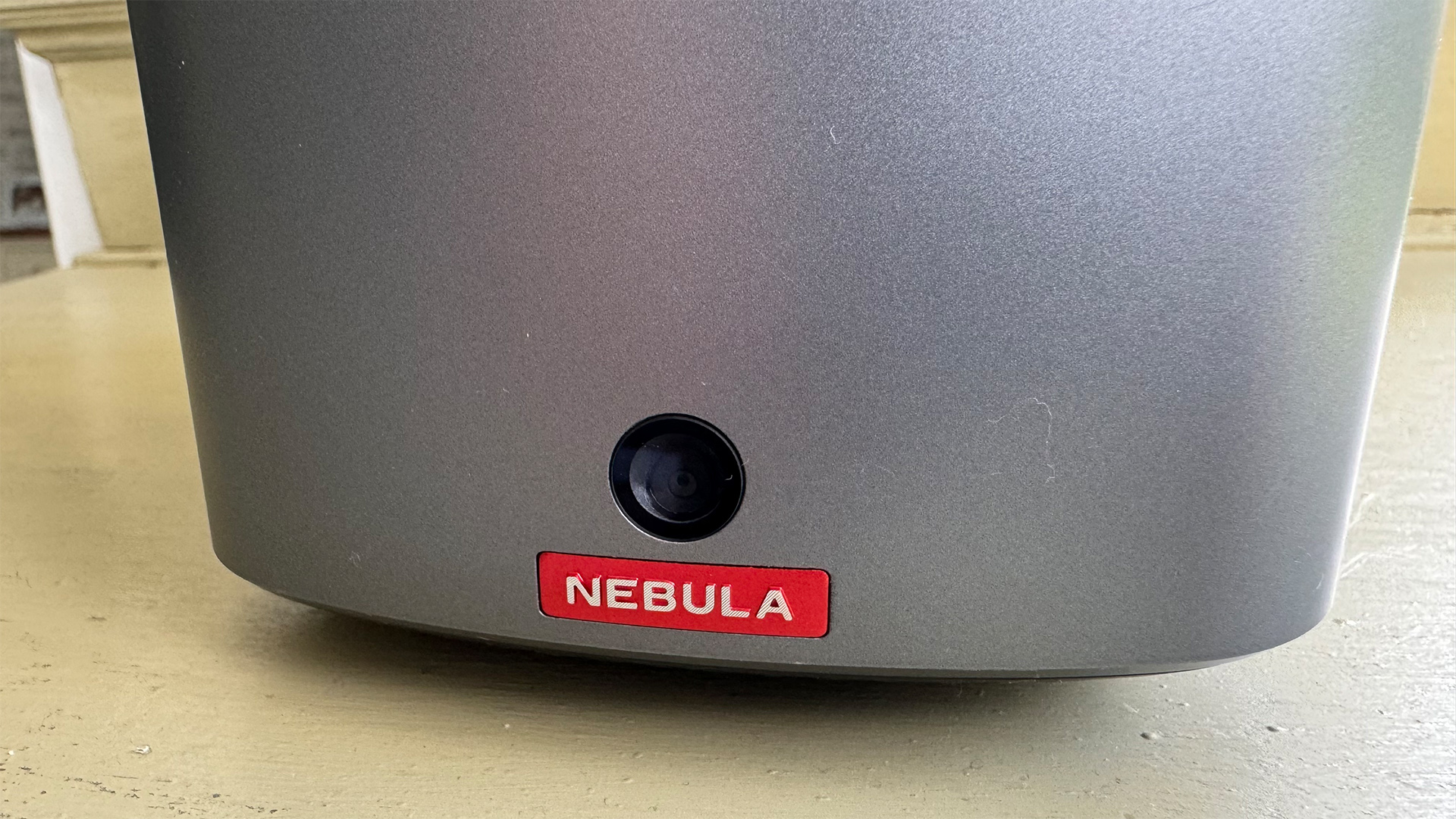
In the context of the portable projection market as a whole, the Nebula Mars 3 Air’s £550 / $600 / AU$1300 price isn’t particularly cheap. As we’ll explain throughout this review, though, it actually feels more like a crossover home entertainment projector than ‘just another portable’, putting it in the same relatively new projector category also occupied by Samsung’s popular The Freestyle, or the BenQ GS50. And those two rivals cost more than the Mars 3 Air.
Add in the Mars 3 Air’s performance and the price starts to look like very decent value for anyone sure they’ll get plenty of use out of what it has to offer.
Design
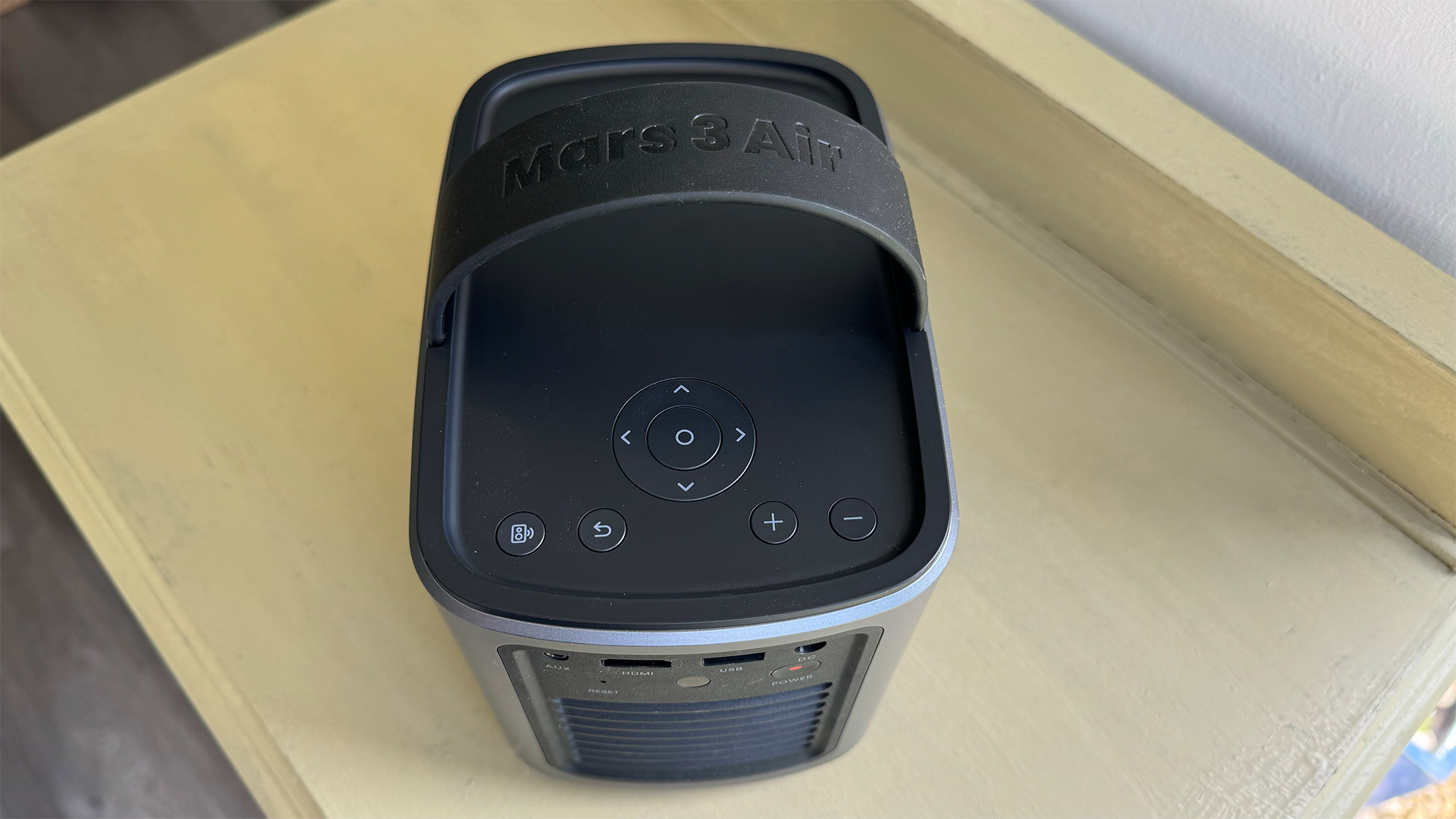
While the Nebula Mars 3 Air is too big and heavy to be considered a true ‘pocket rocket’ projector, it’s still eminently portable – not least because a strikingly well-made and comfortable carry strap is attached to its top edge. And while it’s weightier than most ultra-portable projectors, in truth even a young child would be strong enough to easily carry the projector around in one hand. If you were insane enough to let them.
The Mars 3 Air is so pretty that we’re actually glad there’s a reasonable amount of it to ogle. Its sides are encased in a lovely deep metallic grey finish, which is offset beautifully on the front edge by a black rim around the lens recess and a couple of dashes of eye-catching orange for the Nebula logo and a thin circle running around the lens glass.
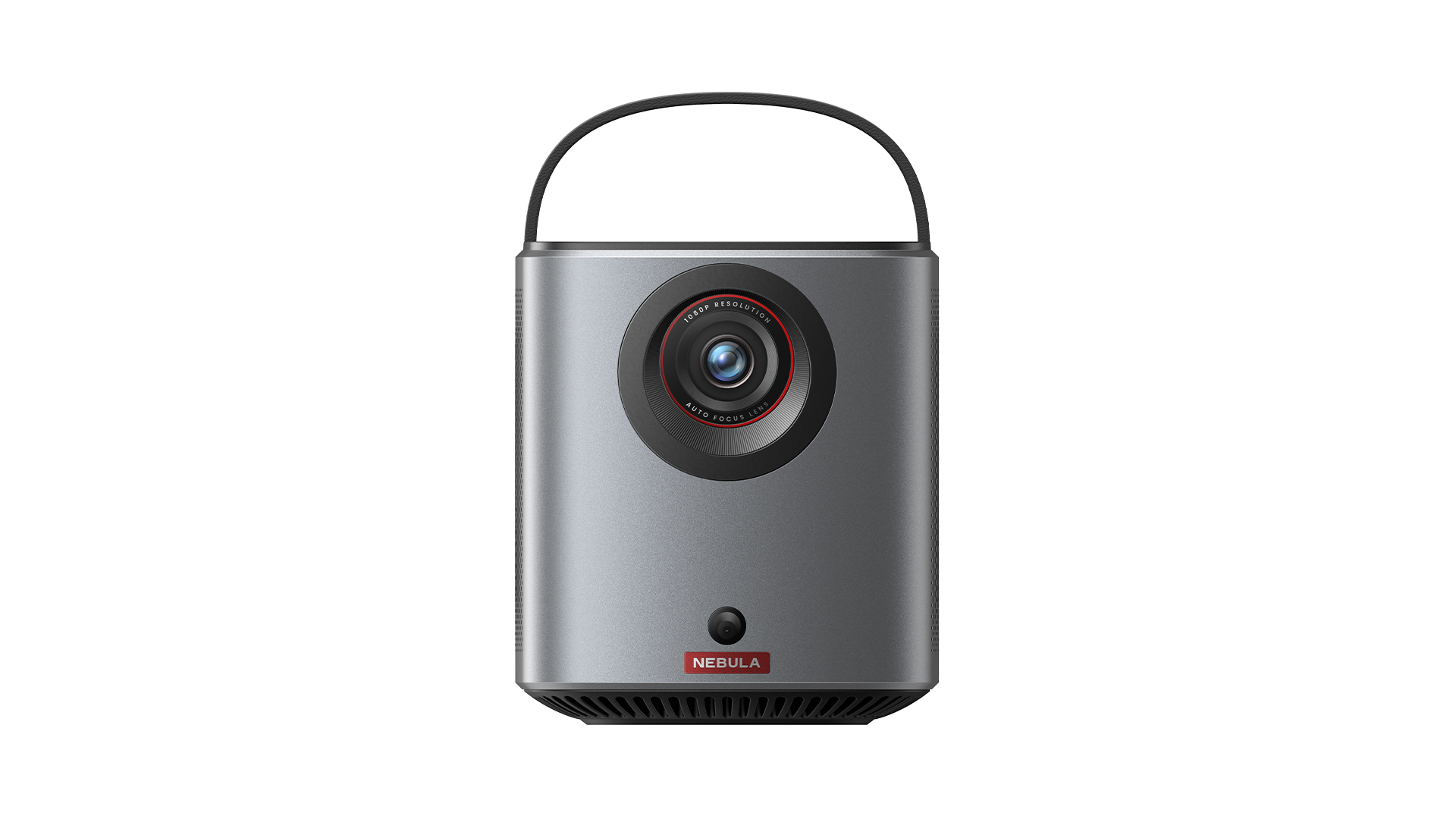
Projector type DLP LED
Processing Intelligent Environment Adaptation 3.0
Screen size 30-150 inches
Native resolution 1080p
Input lag with 60Hz 45.1ms (‘Extreme’ Game Mode)
HDR support HDR10, HLG
Dimensions (hwd) 13 x 12 x 18 cm
The flat top edge continues the premium feel established by the rest of the design, and houses a responsive set of control buttons should you accidentally leave the provided remote control in the boot of the car or back at home.
Build quality is outstanding for a projector of this type and price, adding a sense of heft and solidity that stops it from being easy to knock over during over-exuberant goal celebrations or by over-excited children. We feel confident, too, that it would easily survive the occasional knock that’s part and parcel of being a truly portable projector – especially as the relatively delicate lens is recessed into the bodywork.
The remote control supplied with the Mars 3 Air is surprisingly good by portable projector standards, thanks to its comfortable size, sensible layout, and dedicated buttons for Prime Video and Netflix. The buttons are backlit, too.
Features
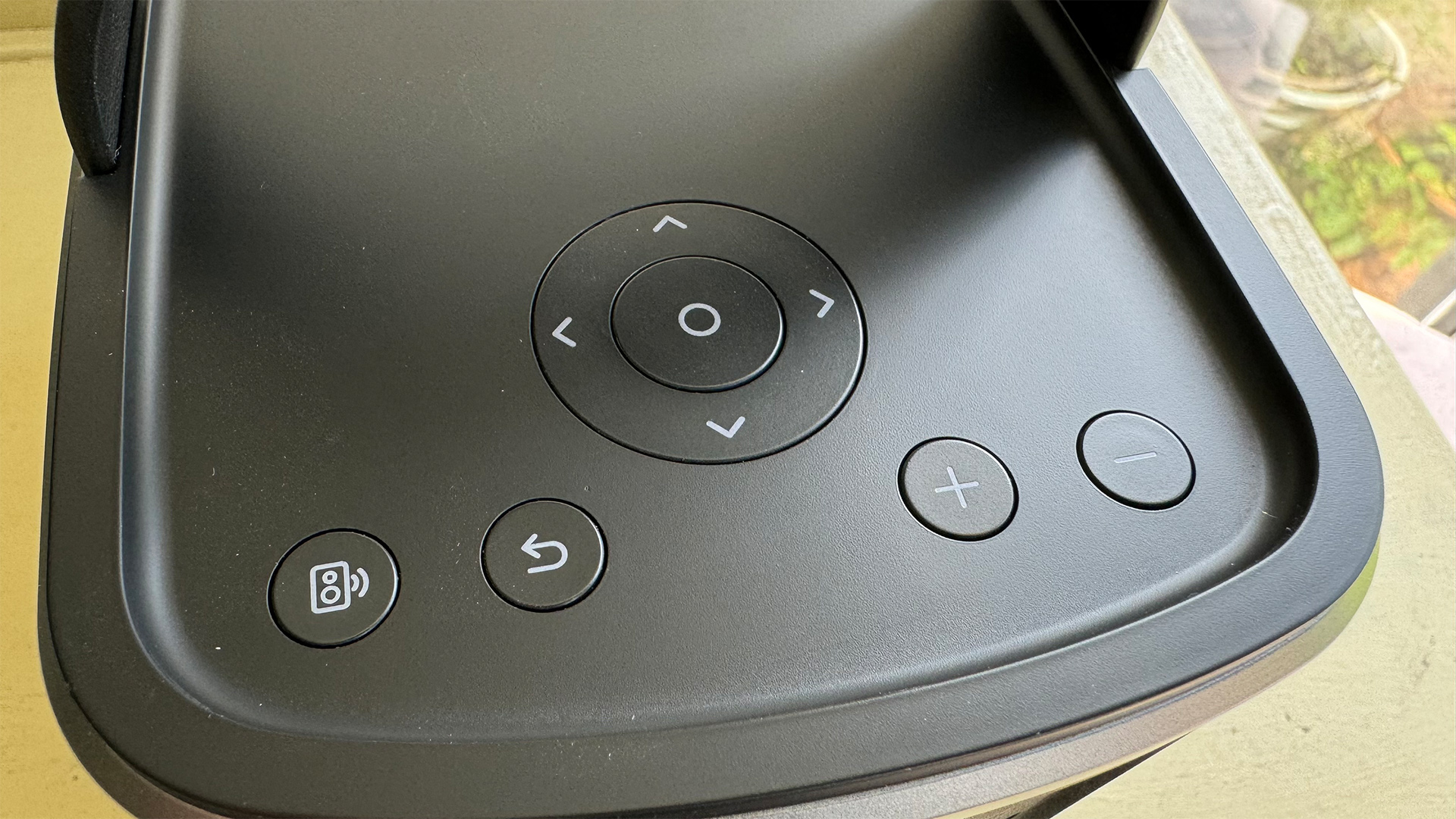
Tucked inside the Mars 3 Air’s portable body is a 1080p-resolution, LED-lit DLP projection system capable of delivering a reasonably impressive claimed peak brightness of 400 ANSI Lumens.
Clearly, this brightness isn’t in the same ballpark as the 1500 lumens and more – sometimes much more – associated with more regular-sized projectors, but there has to be a compromise somewhere in return for making a projector ultra-portable, and brightness is always it. In fact, the 400 ANSI Lumens claim is pretty solid by portable projector standards.
Thanks to this brightness, Anker claims a potential maximum image size of 150 inches for the Mars 3 Air, but much of that brightness will be lost at that sort of size. To get maximum brightness, you need to go for the hardly cinematic minimum image size of 30 inches. In reality, we’d say you’ll probably want to work with an image of between 70 and 90 inches to get the best balance of brightness and scale.
There’s support for the HDR10 and HLG types of HDR (though oddly our Xbox Series X refused to recognise this ability, even though other HDR sources worked fine), with Anker claiming that the projector is capable of covering as much as 90 per cent of the DCI-P3 colour gamut used for most HDR mastering.
As you’d hope with a truly portable projector, the Mars 3 Air carries a built-in battery rated for 2.5 hours of mains-free movie playback. Though the exact battery life will be affected, of course, by how bright you have the picture set, and how loudly you’re running its speakers.
For yes, the Mars 3 Air has speakers. Pretty potent ones by portable projector standards, actually, in that they’re capable of delivering Dolby Audio with 2 x 8W of power. This bodes well for its potential as a true all-in-one portable solution, as the last thing you want to have to be doing if you’ve taken a projector camping or around a friend’s house is mucking about trying to find some sort of external sound system.
If you fancy using the Mars 3 Air simply as a portable stereo speaker without using its projector elements, Anker reckons it should be good for up to eight hours of pure music playback.
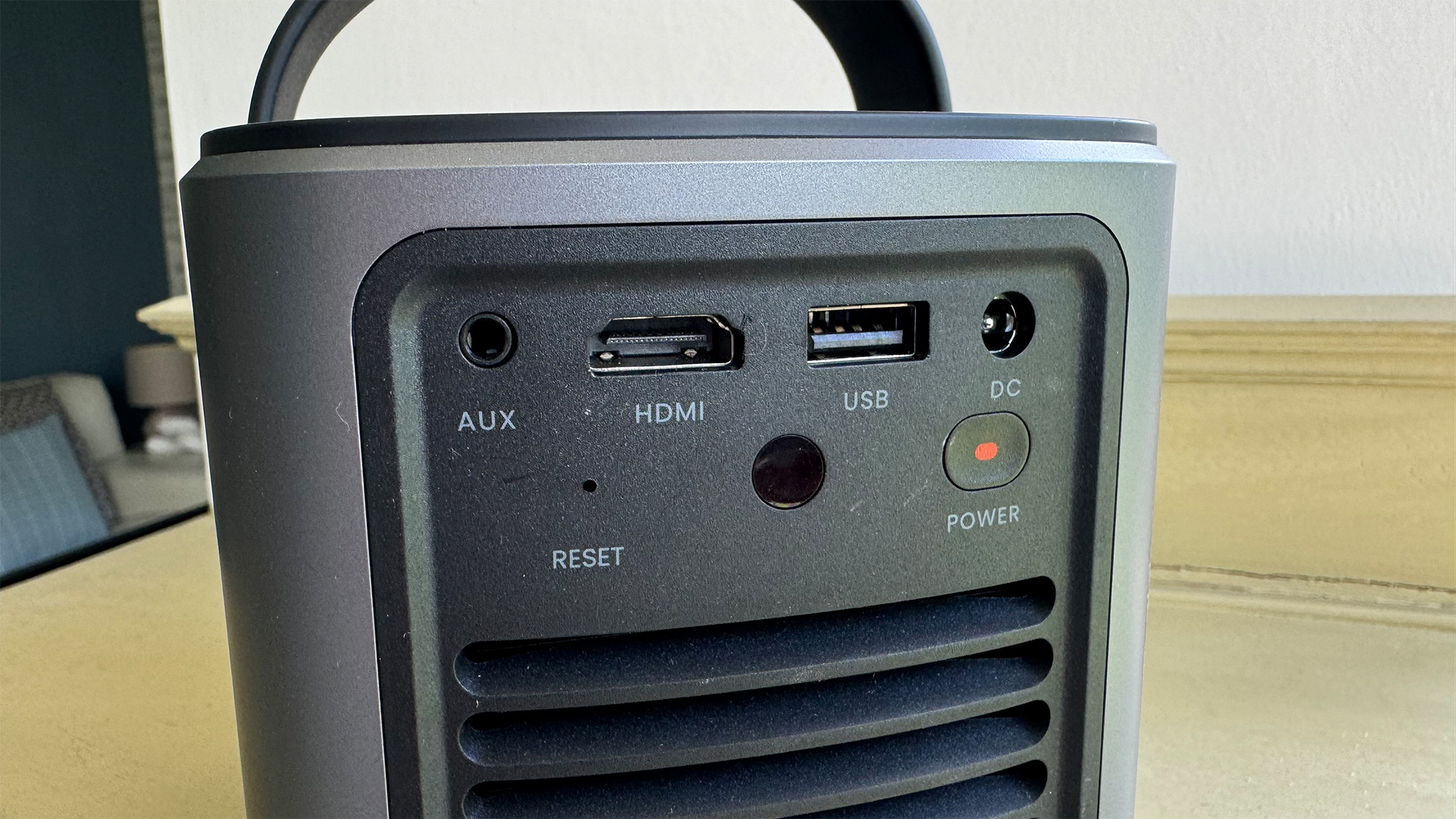
The Mars 3 Air makes it possible to enjoy movies and TV shows without needing any external sources, courtesy of a built-in Google TV operating system, complete with Google Assistant voice recognition. In fact, Anker claims that the Nebula Mars 3 Air is the world’s first portable Google TV projector to sport an official Netflix app. This means that the Netflix app has actually been nativised for the projector so that it can deliver streams that take advantage of the projector’s features rather than just being some generic ‘dumb’ web app that doesn’t know what any device it’s playing on is capable of.
As promised, we find the Netflix app recognises the projector as HDR capable, and delivers HDR streams accordingly. In fact, HDR capability is recognised, too, by the provided Prime Video, Apple TV+ and Disney+ apps. There are still some inconsistencies in the wider Google TV app experience, though, and there seems to be some confusion even with the ‘big four’ apps as to whether the Mars 3 Air can receive Dolby Atmos soundtracks or not. Overall, though, the Mars 3 Air’s implementation of Google TV is less flaky than the older Android TV experience provided by many other projectors.
If the built-in streaming services aren’t enough for you, provision for external sources comes in the shape of a single HDMI port, a USB port and integrated Bluetooth, wi-fi and Chromecast support to make it easy to cast content from a phone or laptop.
One last thing you want from a portable projector is easy set-up, and this is another great area for the Mars 3 Air. An ‘Intelligent Environment Adaptation 3.0’ system automatically sorts out the image’s keystone (so the edges are perpendicular), focus and image size if you’re using a screen, and there’s even an auto object avoidance system that attempts to reposition the image to the side of any objects that might appear in the projector’s direct line of sight. All of these elements, especially the keystone and focus adjustments, typically work really well. So you really can just plonk the projector down wherever you want, switch it on and that’s it; an instant home cinema. Even when you’re not actually at home.
Picture
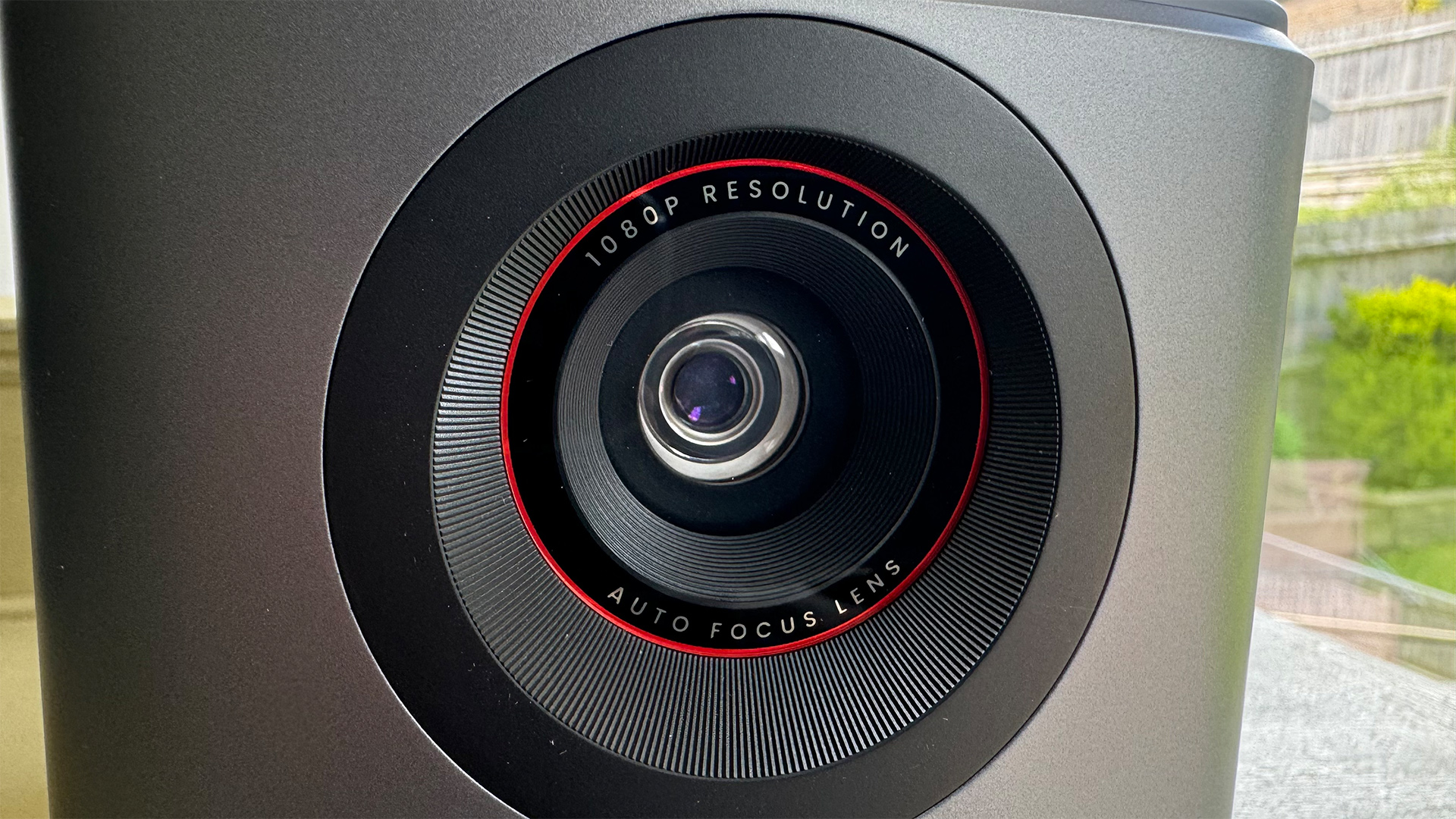
The Mars 3 Air’s pictures comfortably outgun those of most portable rivals in pretty much every department.
For starters, we’re really struck by how sharp and detailed everything looks. Despite the projector using (like all portable models) a fairly small lens aperture, every pixel and texture of a good HD source is faithfully rendered, adding up to a really dense, smooth, cinematic finish to the picture with little evidence of visible pixel structure. Even when you push the image to beyond 100 inches.
The sharpness doesn’t look forced or processing-induced, either, and isn’t accompanied by exaggerated or added video noise. It’s just the projector delivering an image path pure enough to deliver the maximum natural benefit from its Full HD resolution.
The sharpness helps images enjoy an involving and convincing sense of depth and three-dimensionality too, especially as it’s backed up by some exceptionally deft handling (by portable projector standards) of subtle colour tone shifts and blends.
It’s not just the subtlety of the Mars 3 Air’s colours that impresses, either. Saturations are also consistently strong, especially, as you’d hope, with HDR sources. Yet at the same time, everything from the most vivid neon sign to the subtlest skin tone looks natural and convincing. Nor does any tone tend to look excessively vivid or washed out versus the rest of the colour palette.
With standard dynamic range sources the Mars 3 Air distinguishes itself admirably from much of the portable projection world with its contrast – thanks, in particular, to its ability to present dark scenes without much of the grey wash that’s so common among rival projectors. Switching to HDR sources does, it has to be said, cause significantly more greyness to creep into dark areas, but still not as much as you get with most other HDR-capable portable projectors. Plus the Mars 3 Air’s brightness and rich colours do a good job with shots containing a mix of bright and dark elements of hiding the shallower HDR black levels.
The Mars 3 Air also does a better job than most similar projectors of revealing subtle shading in dark scenes, especially with HDR sources. Finally, in the plus column, it handles motion, even with 24p movies, surprisingly naturally and without heavy-handed processing.
There is, though, also a minus column. Starting with the fact that, as with many portable projectors, the main picture area appears within a narrow, slightly brighter outer border. It’s not in truth as distracting as it sounds, and you kind of acclimatise to it, but it’s always there.
It’s also the case that while you can detect a difference in the way SDR and HDR look, the projector isn’t bright enough to deliver bright highlights of HDR sources with anything like the intensity we’d expect to see on a TV. This is again also true to some extent of all projectors, but the upper end of the HDR spectrum is delivered more punchily by a few other small projector rivals.
Occasionally the usually excellent auto focus system can leave the image looking a touch softer in its upper quarter. And, finally, the right-hand side of the picture with our test sample could portray a marginal red tinge during very dark shots.
While these niggles contribute to the Mars 3 Air walking away with a final score of four rather than five, though, they don’t stop it from being consistently great fun to watch with pretty much any source you throw at it.
Sound
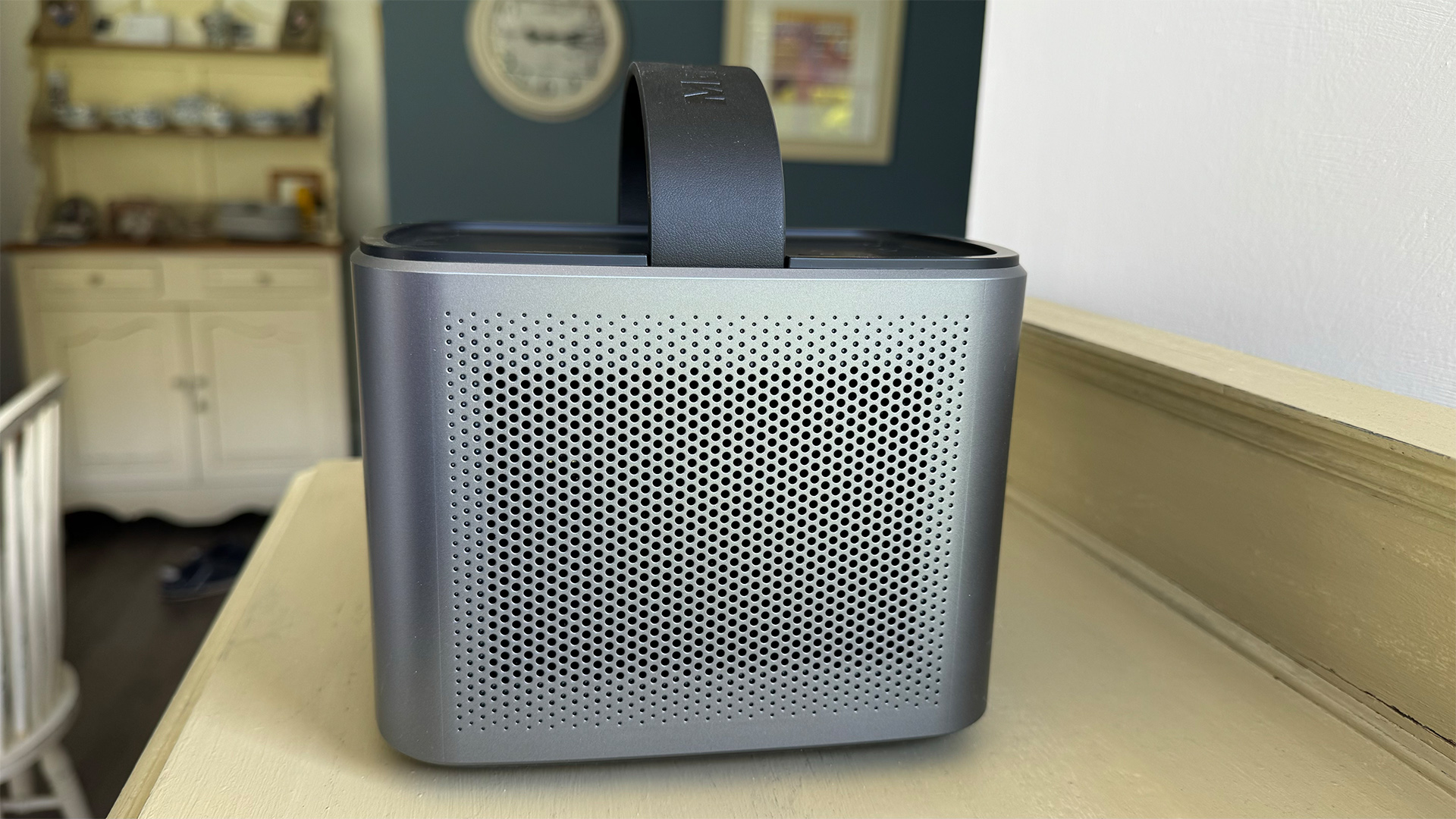
Not surprisingly given how small they are, most portable projectors sound pretty horrible – if they even have any built-in sound at all. The Mars 3 Air’s 2 x 8W speaker set-up, though, bucks this trend in handy fashion.
For starters, the sound escapes startlingly expansively from the projector’s diminutive body, rather than everything sounding trapped inside. This immediately makes movie soundtracks feel more involving, but also helps dialogue appear reasonably connected with the projector’s distant images – provided you’re sat behind the projector, anyway.
Detailed movie mixes sound crisp and busy, but are also well-rounded enough not to sound harsh or thin. In fact, there’s even a solid bass presence to underpin things – something that’s practically unheard of in the small projector world. This unexpected low-frequency response also, though, sensibly works within its limitations, remarkably managing to avoid distortions and dropouts even during Blade Runner 2049’s famously speaker-breaking bass drops.
Ideally, the Mars 3 Air’s sound would push a bit louder, and its bass would join the rest of the soundstage in escaping fairly freely from the projector’s bodywork. These are, though, fairly small complaints that don’t stop the Mars 3 Air from being a surprisingly satisfying all-in-one AV solution. Even its music playback is decent enough to pass muster as background ‘filler’, though you wouldn’t exactly use it as your main hi-fi.
Verdict
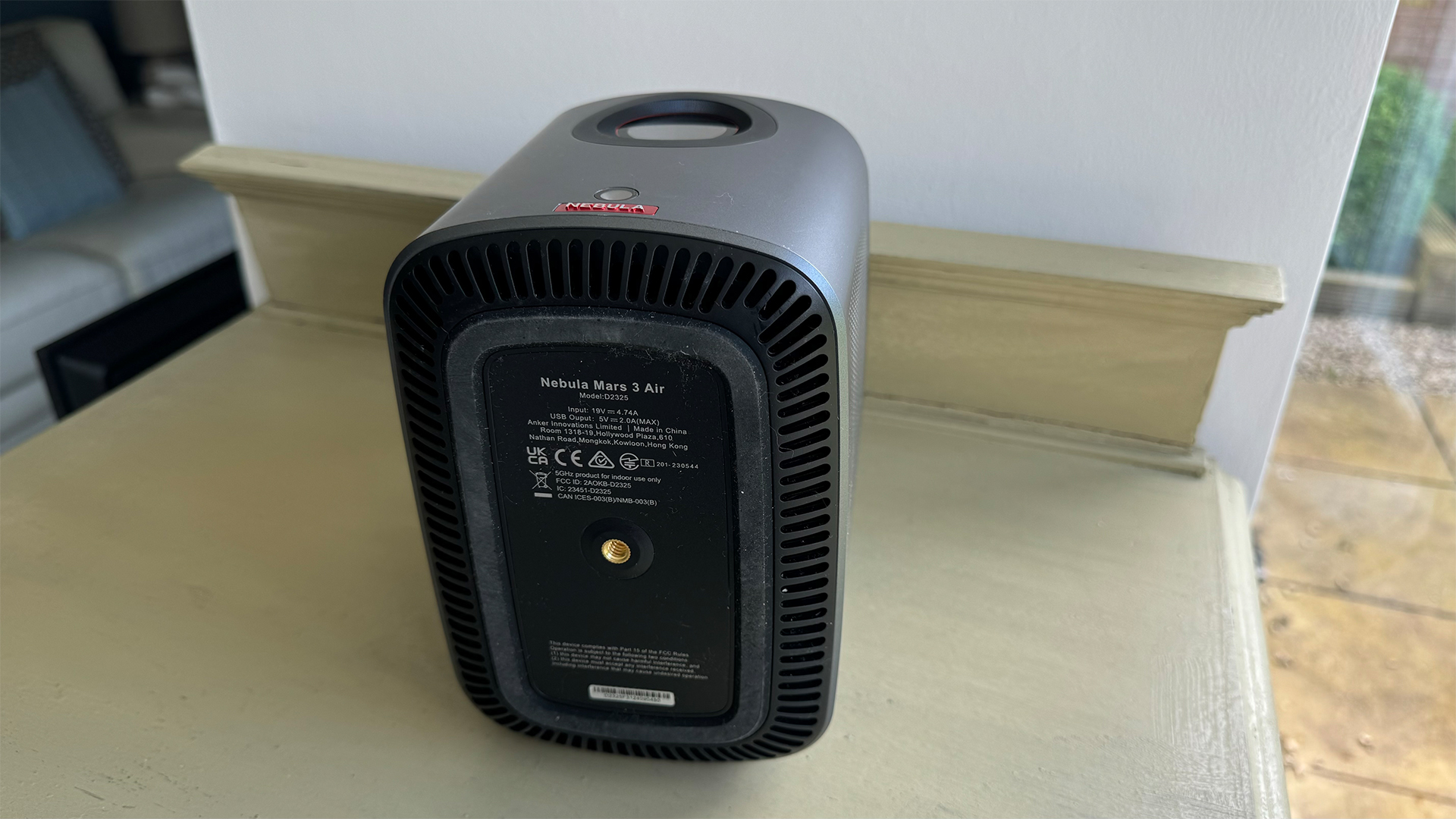
While not perfect, Anker’s Mars 3 Air does a really good job of treading the line between portability and convenience on the one hand, and surprisingly good picture and sound quality on the other. Throw in a solid built-in smart system and a respectable battery life and you’ve got an all-rounder that’s capable of being as fun or as serious as you want it to be – no matter where you are.
SCORES
- Picture 4
- Sound 4
- Features 4
MORE:
How to set up your projector and get the best picture
Read our Hisense C1 review
And our Samsung The Freestyle review
Our pick of the best projectors: Full HD, 4K, and short-throw







